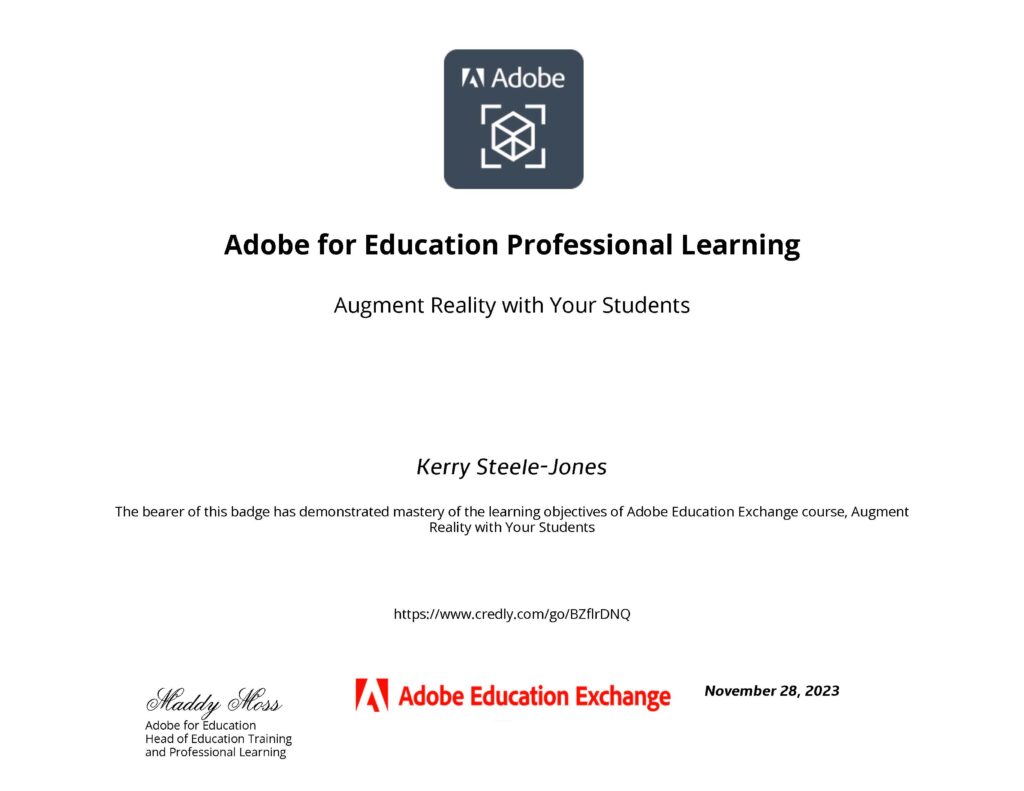Kerry Steele-Jones
XR Adventures:
Exploring Digital Futures
At The University of Winchester, Kerry Steele Jones is a Senior Lecturer in Digital Media Practice. She combines her teaching with active research focused on Extended Reality (XR), investigating how XR technologies can enhance user experience and interaction in various sectors. Her PhD work focuses on developing immersive settings that facilitate experiential learning and consumer experiences, aiming to strengthen professional development for teachers and small business owners.
Kerry is a digital media creative who enjoys experimenting to create innovative applications and solutions that leverage emerging technologies.
XR Authoring Tools
My doctoral study focuses on democratising XR authoring tools for education and SME communities. The intended impact is creating a comprehensive resource hub as a publicly accessible portal. This platform will facilitate the decentralisation of XR content creation and empower schools and SMEs to develop and innovate their XR experiences autonomously. By creating an inclusive and collaborative community, my research aims to make XR technology accessible.
Career Portfolio
Education
PhD in Immersive Technologies
Thesis: Extended Reality (XR): Designing and establishing training resources for implementing and authoring consumer & educational experiences for novice technology users.
Intended Impact: Development of a public access XR resource portal to train educators and SMEs, enhancing XR user experiences and authoring tools.
University of Winchester, 2021 - Present
Postgraduate Certificate in Learning And Teaching In Higher Education with Distinction
University of Winchester, 2017-2018
Master Of Arts in Digital Media Practice with Distinction
University of Winchester, 2014-2015
Bachelor Of Arts With Honours in Digital Media Design 1st Class
University of Winchester, 2011-2014
Academic Appointments
MA Programme Leader, Senior Lecturer
● Directed the MA Digital Media programme, integrating XR technologies to transform traditional learning environments and enhance student engagement with immersive experiences
● Led curriculum development utilising innovative teaching strategies, boosting student interaction and educational outcomes
● Managed and mentored academic staff and students.
● Oversaw the successful re-validation of the Master's programme, presenting and defending its merits to a panel of academics and industry experts, ensuring its alignment with current professional standards and technological advancements.
● Fostered an environment conducive to continuous improvement and innovation, ensuring the delivery of high-quality education and maintaining the programme's relevance in the dynamic digital media field.
University of Winchester, 2020-2024
Programme Leader, MA Digital Media Practice, Lecturer
University of Winchester, 2018-2019
Full-time Lecturer, Digital Media Programmes
University of Winchester, 2017-2018
Hourly Paid Lecturer, Digital Media Programmes
University of Winchester, 2015-2016
Training
Interaction Design and Prototyping for XR
A project-based online course exploring the best practices to design and prototype intuitive, functional, and user-centered experiences for AR, VR, and MR.
Circuit Stream, Canada March 2024 - June 2024
View Course Portfolio View CertificateAI for Designers
Interaction Foundation May 2024 - Present
Instructor Certification in Extended Reality
Edstutia, USA, 2022
View Project Portfolio View CertificateConferences
WellBeing Conference
A Text to go here
Edstutia Conference
Text to go Here
Ginny Conference
University of Winchester, 2011-2014
Professional Experience
Website Manager, 2014 - Present
Built and maintained websites for prominent local businesses, including The Chesil Rectory (Winchester), Inn the Park (Winchester), and The Three Tuns (Romsey), utilising WordPress for content management and engagement.
Developed and executed digital marketing strategies, including social media management, to enhance business visibility and interaction with the community.
Pioneered immersive digital marketing initiatives, notably a holographic treasure hunt using HoloLens technology at the Winchester Wine Festival, which provided a dynamic and interactive customer experience, marking my initial foray into immersive technology.
Website and Operations Manager, Spotty Green Frog, eCommerce, 2006-2015
Oversaw website management, accounts, and warehouse operations, ensuring efficient order processing and customer satisfaction.
Created HTML marketing newsletters, web banners, product images, and print materials, improving the digital presence and marketing reach of the business.
Current Projects
XR Tech for Learning & Collaboration
Latest Adventures

Week 8: Exploring Mixed Reality
The primary objective of this assignment is to challenge you to propose and prototype a Mixed Reality (MR) application, leveraging the convergence of virtual and augmented elements. This task encourages you to think beyond traditional boundaries, utilizing any necessary tools to effectively communicate your MR concepts and showcase a seamless integration of digital and physical worlds
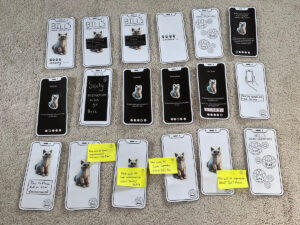
Week 7: AR Prototype
The primary objective of this assignment is for you to design and prototype an Augmented Reality (AR) application that aligns with your unique vision. By leveraging principles of immersive AR design, user interaction, and human-centered concepts, you will create an experience that seamlessly blends digital elements with the real world. Playtesting will offer essential user feedback, allowing you to iterate on your rapid AR prototype and deliver an engaging and user-friendly AR application.
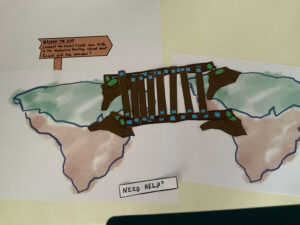
Week 6: VR Prototype
The primary objective of this assignment is to give you the opportunity to design and prototype a VR application that reflects your unique vision and incorporates the principles of human-centered design, interactivity, and immersive user experience. By playtesting your rapid prototype, you’ll gain valuable user feedback to refine and enhance the VR application further.
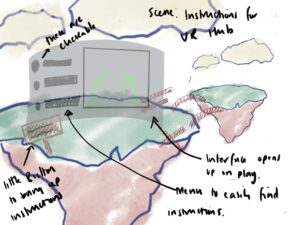
Week 5: UI Prototyping
The primary objective of this assignment is to expand your XR application’s capabilities by integrating a user interface. Through this process, you will design and implement UI elements that enhance the user experience, offering essential information and interactive controls within the VR environment.
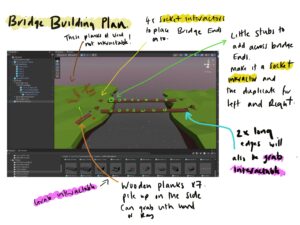
Week 4: Unity’s XR Interaction Toolkit
Objective: Transition your existing 3D scene into a VR application using Unity’s XR Interaction Toolkit. By setting up the XR origin and implementing interactions through interactors and interactables, you will enable users to engage with and navigate through your XR environment, providing a taste of the interactive experiences your application aims to deliver.
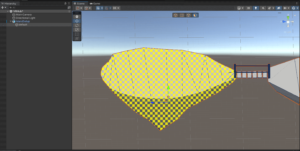
Week 3: Utilising Unity to Prototype XR Applications
Objective: Compose a 3D scene in Unity, using ProBuilder for prototyping and incorporating assets from external sources to enrich your XR environment. This practical exercise will bridge the gap between the design documentation and the virtual space, fostering a deep understanding of Unity’s capabilities for XR development.

